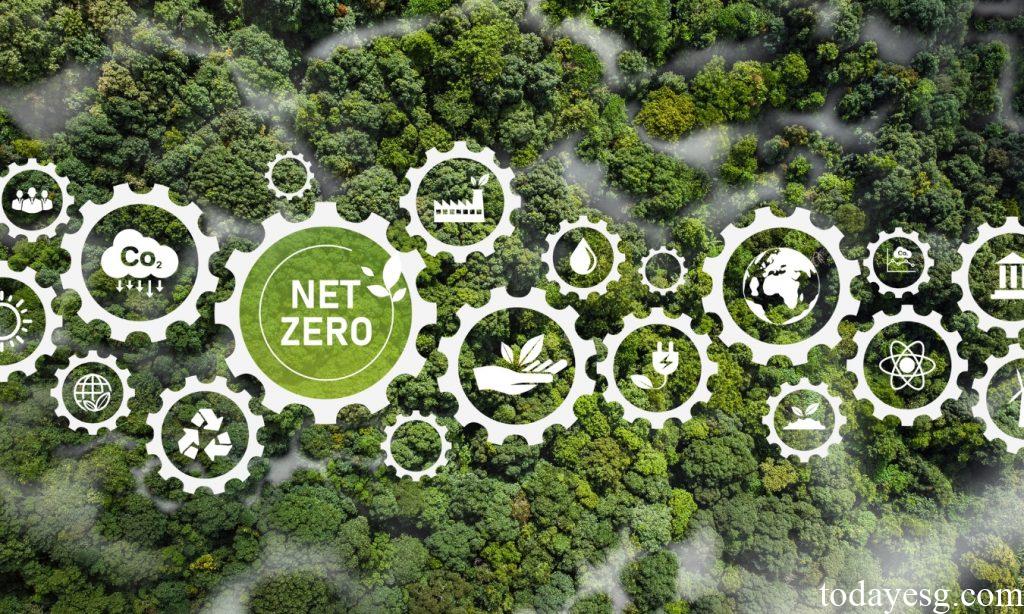CDP Releases Net-Zero Report
Carbon Disclosure Project (CDP) releases the net-zero report of listed companies in China. CDP analyzes the development of 70 companies listed in China and Hong Kong through questionnaires and interviews, and proposes the difficulties and solutions in net-zero transition.
Net-Zero Development of Listed Companies in China
CDP summarizes the net-zero development of listed companies as follows:
- 70% of companies have established sustainable development departments to lead the net-zero plan. More than 80% of the implementation of the plan is in the charge of senior executives;
- 80% of companies have started to calculate the emissions of Scope 1 and Scope 2, and 60% of companies have completed the third-party carbon emission assessment;
- 60% of companies have set quantifiable carbon reduction targets, with financial companies accounting for highest proportion;
- 30% of companies promise to achieve net-zero in the future, and 80% regard it as the performance for industry leaders;
- 30% of companies have started to cooperate with supply chain companies to accumulate data for Scope 3 calculation;
- 30% of companies have used sustainable financial products, with green loans and green bonds accounting for highest proportion;

Difficulties in Net-Zero Transition
For listed companies, achieving net-zero is a long-term process. CDP summarized the difficulties faced by the company in the transition as follows:
- Scope 3 data acquisition is difficult. Most companies are in the initial stage of the Scope 3 report, and they will take at least three years to establish the data information system. Some companies are seeking external support to determine the data boundary of Scope 3;
- Carbon emission disclosure of the supply chain is incomplete. Although some companies have included ESG factors in the evaluation of the supply chain, the information disclosure related to the supply chain is relatively complex, and it is difficult for companies to obtain valuable information;
- It is difficult to obtain low-carbon energy. Some companies are unable to use wind and solar energy due to geographical constraints, and lack the purchase channels and platforms for low-carbon energy. These obstacles will increase the company’s net-zero transformation cost and slow down the action;
- The net-zero transformation poses pressure on the company’s operation. The use of new technologies and the process of energy transformation will increase the company’s operating costs and weaken the company’s short-term performance;
Suggestions for Net-Zero Transition
CDP puts forward the following suggestions to solve the problem of net-zero transition faced by China’s listed companies:
- Improve the transparency and openness of regulatory policies. In the current trend of rising demand for net-zero, regulatory policies need to promote companies to set targets for carbon emissions and continue to disclose information. A transparent and open policy can clearly define the net-zero standard for the company and reduce the implementation difficulty;
- Establish net-zero cooperation based on supply chain. When calculating Scope 3, listed companies lack emission data of the supply chain. They need to cooperate with other companies to provide detailed emission information;
- Improve renewable energy trading process. Listed companies have difficulties in obtaining renewable energy. Improving the transaction process can improve the diversification of companies in energy procurement and meet the demand for emission reduction;
- Establish a technical support organization. Professional technical support can help for carbon emission calculation, emission reduction target design. The Sustainable Green Exchange (STAGE) and ESG Education Platform (ESG Academy) launched by the Hong Kong Exchange are examples of these organizations;
- Develop sustainable financial instruments. Financial institutions can reduce the cost of the company and realize the optimal allocation of resources through green loans, green bonds and other financial instruments.
Reference:








